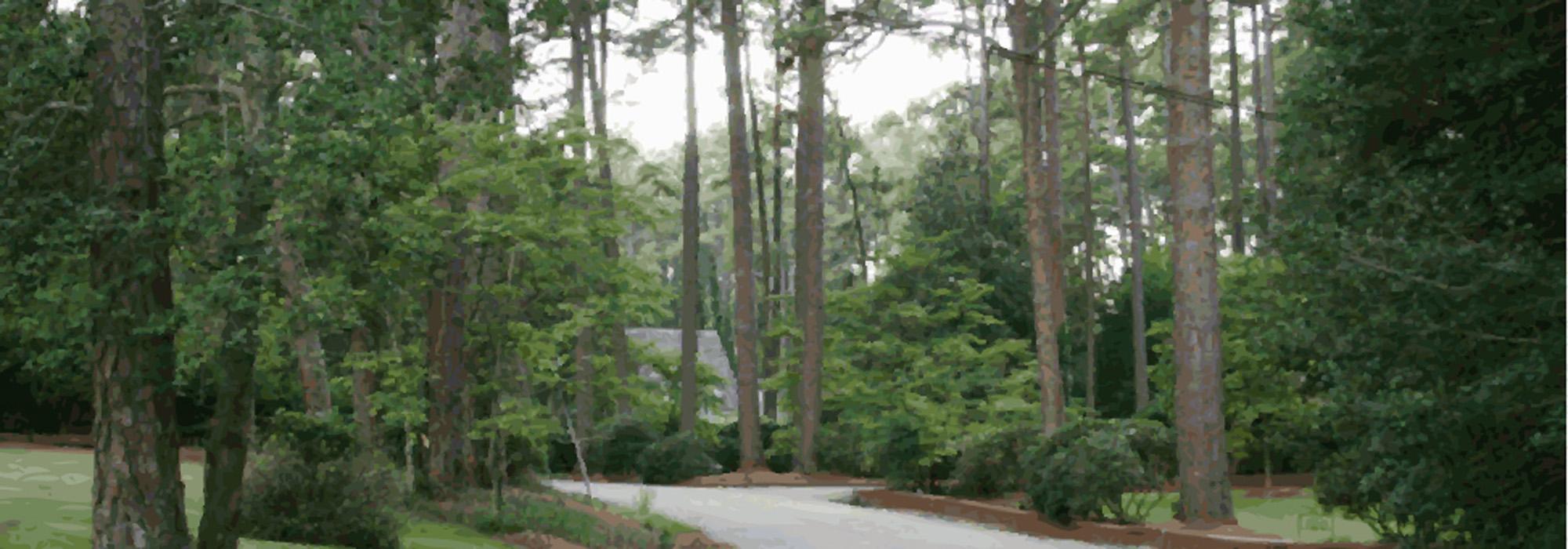It Takes One: Ray Owen
I am a lifelong resident of Southern Pines, North Carolina, a resort town best known for world class golf courses and beautiful horse country. A graphic artist, writer and historian, there is nothing so remarkable about me as the place that I am from—to know me is to know this land—and that is what drives my creative interests. For the better part of my life, my town was a sparsely populated retreat for the wealthy who lived in close quarters with the native Southerners—a dynamic enclave of people from around the world. While I have been fortunate to have traveled, spending time in the Middle East, Europe, Africa and Central America, I have found the place I loved most was where I was born.
I live in the Sandhills section, a region of elevated sandy ridges, covered with a growth of longleaf pines. Our town is bounded on the south and east by thousands of acres of woodlands. In the heart of Southern Pines is the most ancient part of this forest, with mammoth pines as old as 460 years. It is believed to be the largest tract of the virgin longleaf pines that once covered the southeastern coastal plain. Many of the trees are marked with the V-shaped cuts made by former slaves or their descendants, to let loose the flow of sap collected for turpentine, pitch and rosin. And there are thousands of these "turpentine trees" in the woods where I was raised. (See Landslide 2010: Every Tree Tells a Story for more on the “boxed” longleaf pines.)
Growing up I encountered a number of influential preservationists, many of them responsible for sustaining the living heritage that I so enjoy. When I was a teenager, I was befriended by Buffie Ives, who was the sister of Adlai Stevenson. She encouraged my interest in history, challenging me to share what I learned with others and to protect those things that were easily scattered. I remember well the day she called upon everyone in town to chain themselves to pine trees that were threatened with destruction. She fought her case all the way to the governor's office and won, and those trees still stand today. Buffie and others like her have been a powerful influence on my life.
My town was "discovered" after the neighboring Village of Pinehurst hosted the U.S. Open in 1999 and 2005. With the great influx of new arrivals, the authenticity of the community was threatened with erasure as the features that set it apart from any other place were rapidly being over-written or destroyed. I began working with others on finding the balance between development and preservation, bringing a series of experts to the community, such as Donovan Rypkema of Place Economics and Ed McMahon from the Urban Land Institute.
Working with The Classical Design Foundation, in October 2009, I facilitated a lecture by Charles Birnbaum of The Cultural Landscape Foundation to raise awareness of the Southern Pines cultural landscape. This public outreach was attended by community leaders and hundreds of citizens, bringing together formerly unallied organizations such as the Friends of Weymouth Landscape Committee, The North Carolina Chapter of The Nature Conservancy, Preservation North Carolina, The Sandhills Council of Garden Clubs, Sandhills Natural History Society, The Southern Pines Garden Club, and Sustainable Sandhills. Work has been ongoing to encourage a respect for and preservation of our unique living heritage. As a result, sustaining cultural landscape is included in the goals and policies of the new 20-year comprehensive plan for Southern Pines. And the town is currently administering a federal pass-through grant to produce a Cultural Landscape Report for its most important historic site, the Weymouth estate.
How would you define a cultural landscape?
We mark the land in a way that marks us as a people, and that is a cultural landscape. It is our open park-like forests maintained by prescribed burning, the remaining homesteads of pioneering Scots, the turpentine trees, and the designs of great landscape architects who created gardens of natural beauty, helping to establish a resort in what was one of the last frontiers along the Eastern Seaboard. This is our story—our cultural landscape—deeply personal, it means the most to those who are of it.
Why did you get involved in the landscape that was threatened in your community?
I felt it was a moral issue, and that I had something meaningful to offer. I began writing about our forgotten past, and the remarkable breed of developer/philanthropists who settled the region in the late 19th and early 20th century, establishing their Country Place Era retreats alongside the slab roofed houses and clay-daubed chimneys of the Scottish-Americans and African-Americans who had settled the district. The stories seemed to have resonated with others, taking on a life of their own and inspiring me to do more.
How did your understanding of this landscape change as a result of your advocacy efforts?
I came to know how widespread the cultural landscape was in my community. Ours is an environment of extremes, historically known as an inhospitable place with monster droughts and floods of rain. Working over a 30-mile area, Warren H. Manning and Alfred Yeomans devised landscape plans utilizing native flora along with naturalized drought-tolerant ornamentals, incorporating the old-growth trees into their designs. This strategy proved very compatible with the longleaf pine ecosystem, so much so that it appears natural. I have come to understand that hope for the survival of these designs rests on public education about their artistic and cultural value.
Did the understanding of others change as well? If so, how?
I learned that most people, even those who don't agree with you, are sincere in their beliefs. And that there are only a very few, who for whatever reason, simply don't care. It is important to respect others as we present our positions, and to take care not to argue a point as though it were the last battle—particularly in a small town where everyone is close. This is not to say that one should shy away from a hard topic or taking a strong position, only that reasonable dialogue is the key for any public movement.
What is the message that you would like to give our readers that may inspire them to make a difference?
Cultural landscapes are deeply rooted in the hearts of those who create them, and belong to all who experience their beauty. Focus on celebrating this beauty and sharing it with others, and you will find doors that seemed closed opening, as people discover their living heritage.







